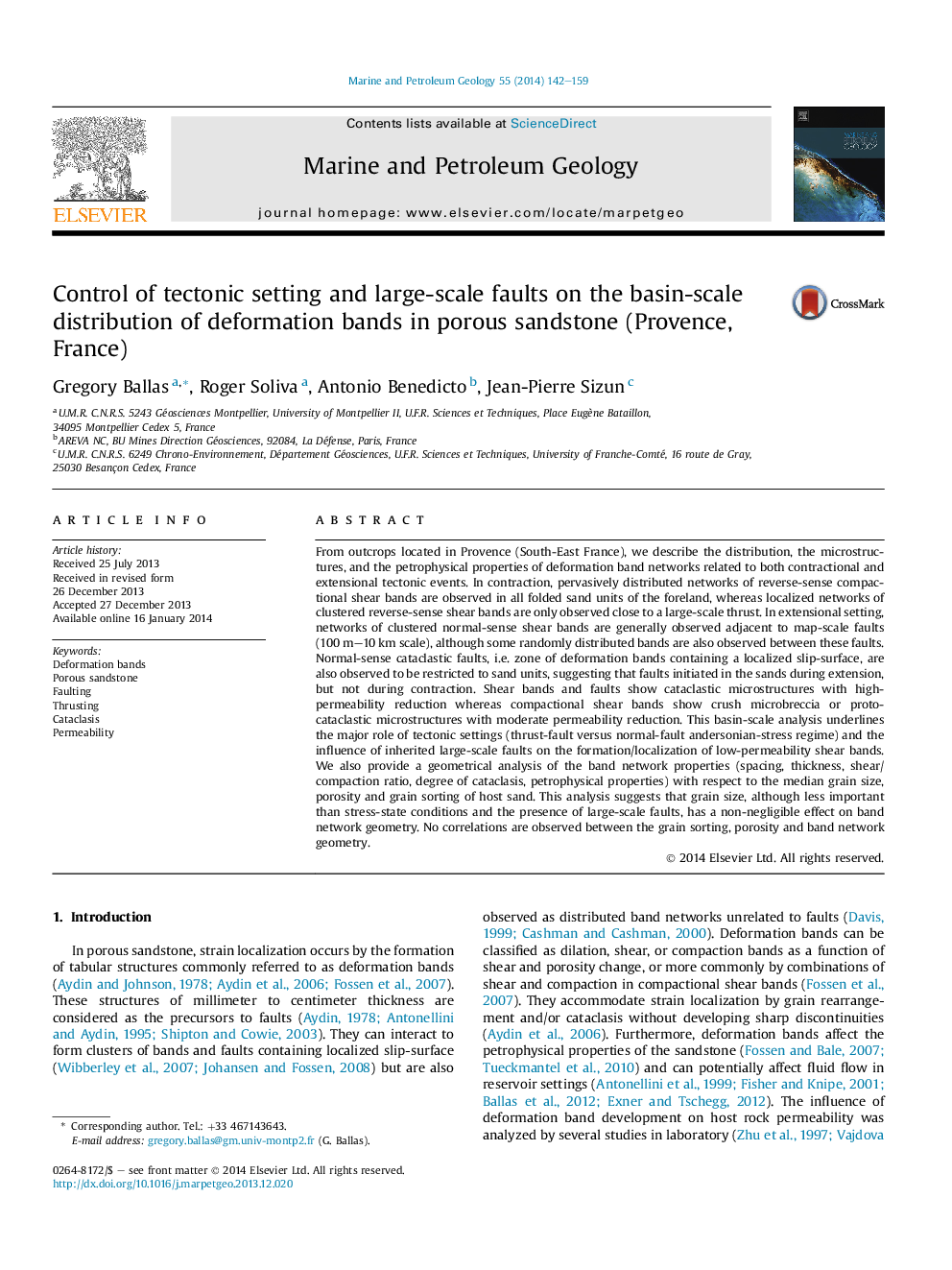| Article ID | Journal | Published Year | Pages | File Type |
|---|---|---|---|---|
| 6435433 | Marine and Petroleum Geology | 2014 | 18 Pages |
â¢Geometry, microstructure and petrophysical properties of deformation bands.â¢Control of tectonic setting on the deformation bands distribution.â¢Role of large-scale faults on the localization of low-permeability shear bands.â¢Influence of the host sand granulometry on the deformation bands geometry.
From outcrops located in Provence (South-East France), we describe the distribution, the microstructures, and the petrophysical properties of deformation band networks related to both contractional and extensional tectonic events. In contraction, pervasively distributed networks of reverse-sense compactional shear bands are observed in all folded sand units of the foreland, whereas localized networks of clustered reverse-sense shear bands are only observed close to a large-scale thrust. In extensional setting, networks of clustered normal-sense shear bands are generally observed adjacent to map-scale faults (100Â m-10Â km scale), although some randomly distributed bands are also observed between these faults. Normal-sense cataclastic faults, i.e. zone of deformation bands containing a localized slip-surface, are also observed to be restricted to sand units, suggesting that faults initiated in the sands during extension, but not during contraction. Shear bands and faults show cataclastic microstructures with high-permeability reduction whereas compactional shear bands show crush microbreccia or protocataclastic microstructures with moderate permeability reduction. This basin-scale analysis underlines the major role of tectonic settings (thrust-fault versus normal-fault andersonian-stress regime) and the influence of inherited large-scale faults on the formation/localization of low-permeability shear bands. We also provide a geometrical analysis of the band network properties (spacing, thickness, shear/compaction ratio, degree of cataclasis, petrophysical properties) with respect to the median grain size, porosity and grain sorting of host sand. This analysis suggests that grain size, although less important than stress-state conditions and the presence of large-scale faults, has a non-negligible effect on band network geometry. No correlations are observed between the grain sorting, porosity and band network geometry.
